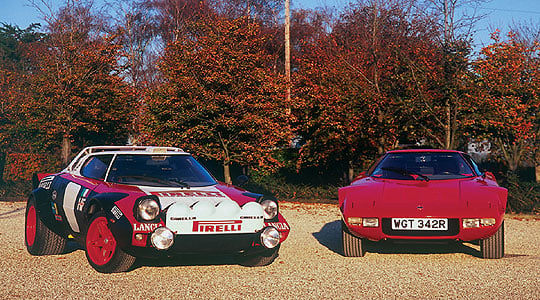
The following is an extract from Simon Park's feature in Auto Italia magazine, Issue 117 2005. For access to the full feature, plus articles on the new Alfa Romeo 159, the special Lamborghini Murciélago Roadster from the film 'Batman Begins', a supercharged Alfa Romeo 1750SS bodied by James Young, and much more, see www.auto-italia.co.uk
The Road Stratos (chassis no1778)
This mint machine was born on September 17th 1974, destined for the German market, and represents the Stratos in its purest form – Gandini’s sublime shape unspoil(er)ed by any bolt-on addenda. The optional wings have always polarised opinion aesthetically, but they work. Only the competition-pattern 15-inch Campagnolo wheels are non-standard, and next to the fully kitted-out rally car it looks almost effete. With its bloated rear arches and massive P7s, its spoilers, roof air vent and auxiliary light pod, the Gp4 looks downright scary.
And sounds it. The sublimely outrageous noise assaults my eardrums three cars back where, driving the stradale, I’m already wallowing in a tsunami of Stratos memories – from the corkscrew-contortions needed to climb aboard to the familiar, skew-whiff, just-left-of-centre driving position.
Ahead, the swoopingly-curved ‘dash’ and seven-dial binnacle butt up to a screen which is a geometrically perfect, constant-radius cylindrical section (to minimize distortion). Combined with the wonderfully slender A-posts (impossible nowadays, sadly), it affords a view for’ard as panoramic as that aft is pitiful.
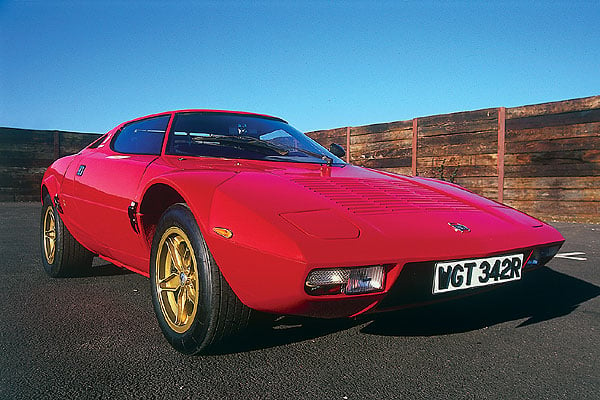
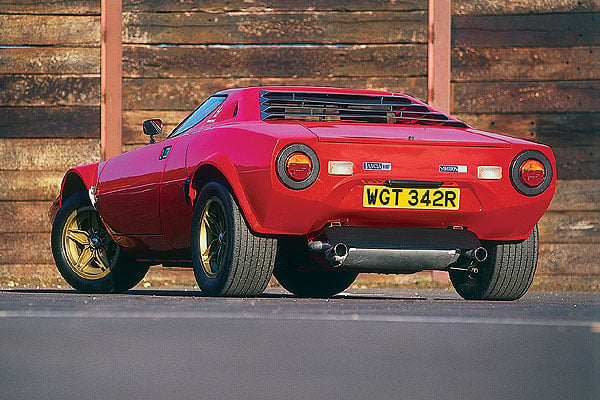
Your relationship with that fabulous V6 is more intimate in a Stratos than in any Dino, its distinctive, restless sound fluctuating wildly in pitch and intensity in response to the throttle. Eager to confront the 7500 red line, it has great flexibility lower down, too, optimised by the sub-tonne weight.
Here is that light, ultra-precise steering that redefines ‘feedback’, the chunky gearchange and the rather dead-feeling, but ultimately powerful, brakes. The suspension is as alive as ever, the usual muffled clonks and bangs reminding you that this is no all-mouth-and-trousers poseur. But this one rides beautifully, too – always a sure sign of a well set-up Stratos, with the right blend of compliance and stiffness.
Tolstoyan quantities of verbiage have been written about the Stratos’s ‘tricky’ handling, and mastering the range and degree of adjustability built into the suspension requires skill and experience. When a Stratos is good, it is very very good; but when it is bad… In a nutshell, it’s about getting enough bite at the front end to hold its own against stupendous grip and traction from the back (weight distribution is roughly 40/60% front/rear). Power understeer of cosmic proportions is common – we’re talking exiting-roundabouts-via-the-grass-verge stuff. Conversely, with a wheelbase barely longer than its track, a Stratos can react with alarming alacrity to ham-footed power reversals.
Appetite wetted, I’m ready for the rude version…
The Group 4 Stratos (chassis no1723)
Corkscrewing into this beastie takes you into a very different environment. Gone is the prominent binnacle, in its place a conventional full-width dash, chock-a-block with stuff, all with its original Italian labelling. I lost count of the light switches (a navigator’s nightmare), there’s a pull-knob for ignition, a rubber starter button and two fuel pump switches (left and right tanks) – all sharing a wonderfully precision-engineered feel. In the centre, a large knurled aluminium wheel controls brake bias, while two Halda Tripmasters confront the co-driver.
At his feet, an alloy footrest matches the driver’s perfectly placed pedals, and both have grippy Sparco seats best suited to bums a trifle narrower than mine. Like the road car’s Bordigari, it won’t distract me for long. Rear visibility is even worse here though, the interior mirror filled by the monstrous glassfibre airbox which obscures both engine and outside world alike.

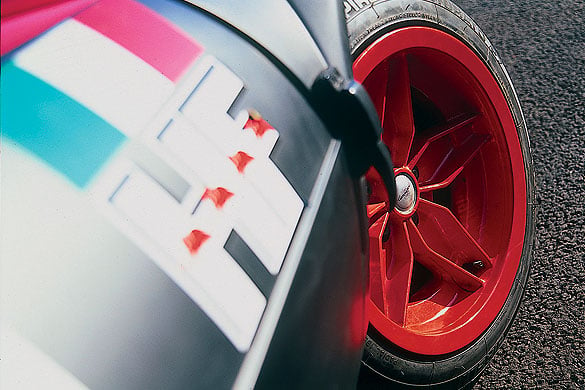
You have to be masterful with this car; give it large – plenty of everything – and it delivers. Rock solid with the power on, surprisingly well-mannered on lift-off, it was far nicer than I’d expected on Goodwood circuit. The steering is usefully higher-geared than the road car’s, the clutch surprisingly light and progressive, the brakes unsurprisingly heavy but effective. The gearbox’s regulation-compliant ‘synchromesh’ (nudge, wink) is largely illusory in practice, and the shorter-than-standard lever throw requires a firm but deft hand (and probably no clutch, though I thought better of trying it).
Then there’s that engine – still flexible, but demonic above about 4500rpm. Its 280bhp matches a 24-valve motor’s output in 1977 (such is progress) and it’s clearly quicker than the road car – although on the wide-open spaces of Goodwood it didn’t feel all that fast by today’s standards. On a narrow forest dirt track, in the dark, it’d be a different story…
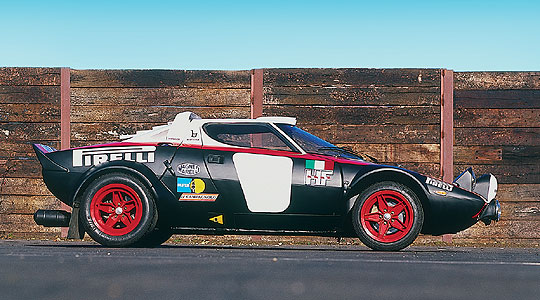
And on the road, where it’s a bit of a fish-out-of-water, its uncompromising competition credentials are all-too apparent. The engine is docile enough, but the very un-muffledcrash-bang-wallop from the all-steel suspension (gone is the road cars’ rubber insulation) and awkward low-speed gearchanges would soon sap your energy. And it was on the way home that I experienced the scariest moment of the day – pulling out of a petrol station. Rear three-quarter visibility was not a priority.
‘Fun’ doesn’t come close to decribing a Stratos. It’s got it, it flaunts it, and in any Stratos, every journey’s a special stage – very special.
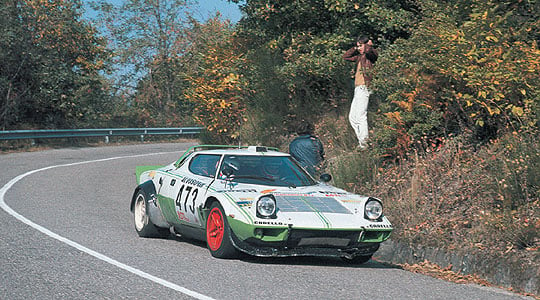
|
Words by Simon Park and pictures courtesy of Michael Ward.
See www.auto-italia.co.uk or call +44(0)1858 438817 for back issues and subscriptions. |
ClassicInside - The Classic Driver Newsletter
Free Subscription!








